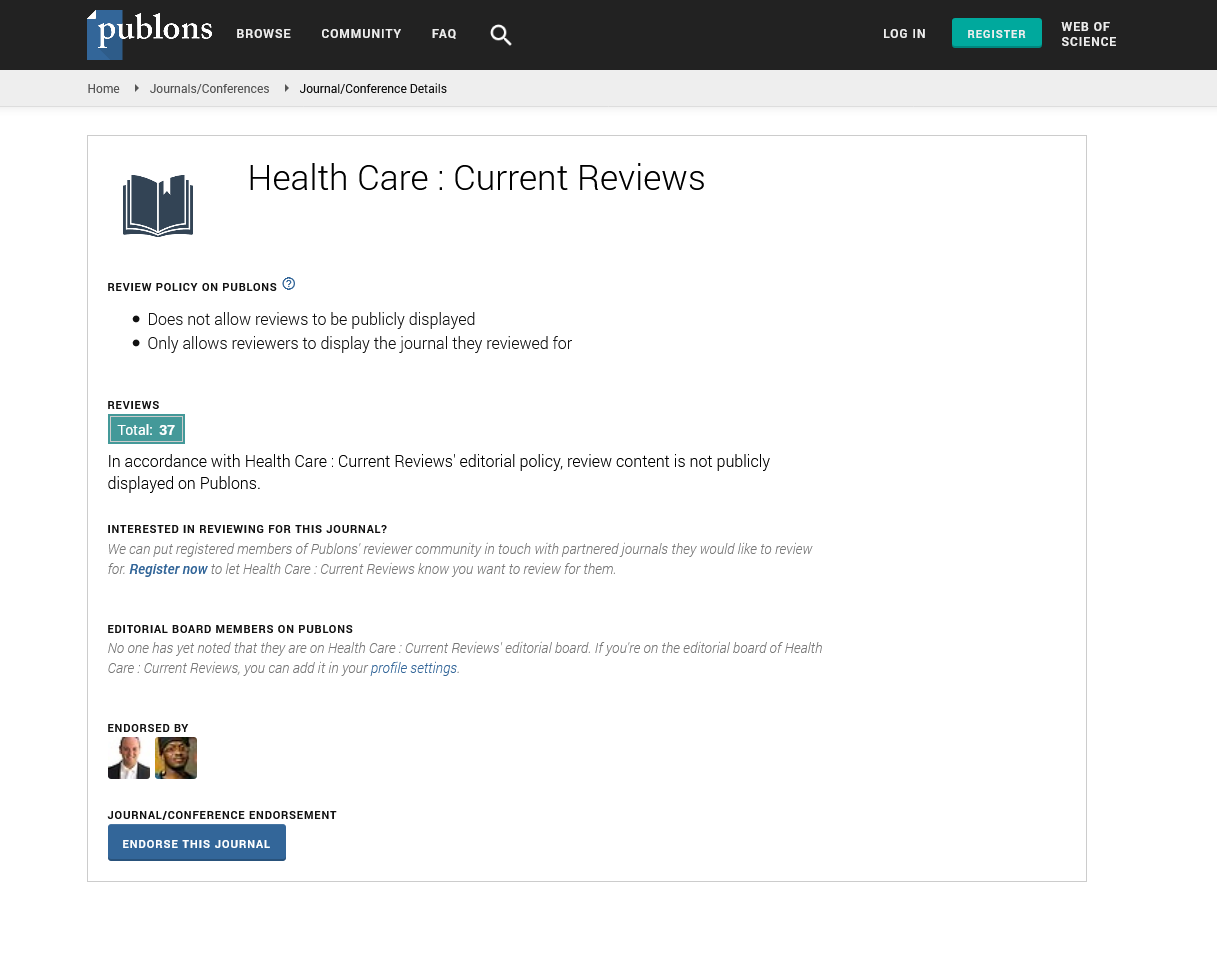Indexed In
- Open J Gate
- Academic Keys
- RefSeek
- Hamdard University
- EBSCO A-Z
- Publons
- Geneva Foundation for Medical Education and Research
- Google Scholar
Useful Links
Share This Page
Journal Flyer

Open Access Journals
- Agri and Aquaculture
- Biochemistry
- Bioinformatics & Systems Biology
- Business & Management
- Chemistry
- Clinical Sciences
- Engineering
- Food & Nutrition
- General Science
- Genetics & Molecular Biology
- Immunology & Microbiology
- Medical Sciences
- Neuroscience & Psychology
- Nursing & Health Care
- Pharmaceutical Sciences
Commentary - (2022) Volume 10, Issue 9
Development of Primary Health Treatments on Non-Communicable Diseases
Bernardo Julia*Received: 02-Sep-2022, Manuscript No. HCCR-22-18367; Editor assigned: 05-Sep-2022, Pre QC No. HCCR-22-18367(PQ); Reviewed: 19-Sep-2022, QC No. HCCR-22-18367; Revised: 26-Sep-2022, Manuscript No. HCCR-22-18367(R); Published: 03-Oct-2022, DOI: 10.35248/2375-4273.22.10.315
Description
More so than communicable diseases, Non-Communicable Diseases (NCDs) are the leading cause of death worldwide. In addition to the 14 million premature fatalities caused by NCDrelated diseases each year, the majority of these deaths take place in low and middle-income nations. Initiatives to reduce poverty in low-income countries are predicted to be hampered by the rapid increase in NCDs, particularly as a result of increased household spending for health care. Millions of individuals fall into poverty each year as a result of NCDs' high costs which include ongoing, expensive treatment and loss. This also inhibits development. Malaysia is experiencing a rising trend in the prevalence of NCDs. According to the two most recent studies on disease burden, there was a rise in the prevalence of diabetes in 2006 and hypercholesterolemia in 2015. A cost-effective and evidence based intervention is required to address these problems in order to better manage and maybe mitigate the rising trend of NCDs particularly in the primary healthcare environment.
The primary healthcare situation is different and is currently being taxed by an increase in the number of NCD patients, which is burdening both the system and the providers of health services. In July 2017 a comprehensive integrated and multiapproach intervention package known as the Enhanced Primary Health Care (EnPHC) was introduced in response to concerns regarding a referral mechanism, a lack of individualized care low patient satisfaction and the need for high-quality primary health care. Optimization of comprehensive care, service delivery through structural and operational integration, targets and managements of NCD risk and multi-sectoral interventions for coordinated response were the four main goals of this initiative. The primary care level intervention concentrated on creating Family Health Teams (FHTs) that are responsible for individuals and the population within catchment areas, starting a multidisciplinary healthcare team creating a strategic referral and provider networking system enhancing the use of technology and developing leadership skills at health clinics overall.
Primary care reform intervention is increasingly recognized as a crucial strategy for tackling global healthcare concerns. The success of these interventions depends on integrating integrated approaches into the current health care system, including screening and early detection at the community level, disease management and the promotion of a healthy lifestyle at the primary care level and ongoing patient outcome monitoring through the family health care system. Primary care that is supported well is viewed as being essential to a patient-centered healthcare system that is successful and efficient. Evidence suggests that building primary care infrastructures as part of national health care system reform leads to healthier populations, less health-related inequities, and reduced overall health care expenditures. However, the longevity of these reforms is typically poorly understood. The definition of sustainability is the degree to which a newly implemented treatment, service, practice or innovation is maintained or institutionalized within a service. It is frequently a significant challenge for policymakers in healthcare to continuously sustain an effective complex intervention.
According to a recent review up to 60% of new initiatives end when the financing does. Such a phenomena produces important negative effects, including resource waste an inability to provide best practices and healthcare providers of the change, which leads to a lack of trust between those who spearhead the change and those who implement it on the ground. Any newly introduced healthcare intervention may be accepted or rejected based on the perception, attitudes and actions of healthcare providers, which could lead to the organization going back to its old methods when the implementation time is through. To ensure the longevity of these interventions, it is crucial for change programmers to be able to recognize and manage the escalating pressures. Future adoption of the intervention can be implemented in accordance with the unique configurations of the locale thanks to the assessment of obstacles and sustainability. It focuses on how the newly implemented EnPHC intervention is judged to be sustainable at the chosen primary care clinics Implementers expressed their opinions on aspects that affect or increase the sustainability of these interventions in addition to ranking how easy it is to sustain each intervention component under EnPHC.
Citation: Julia B (2022) Development of Primary Health CareTreatments on Non-Communicable Diseases. Health Care Curr Rev. 10:315.
Copyright: © 2022 Julia B. This is an open-access article distributed under the terms of the Creative Commons Attribution License, which permits unrestricted use, distribution, and reproduction in any medium, provided the original author and source are credited.

